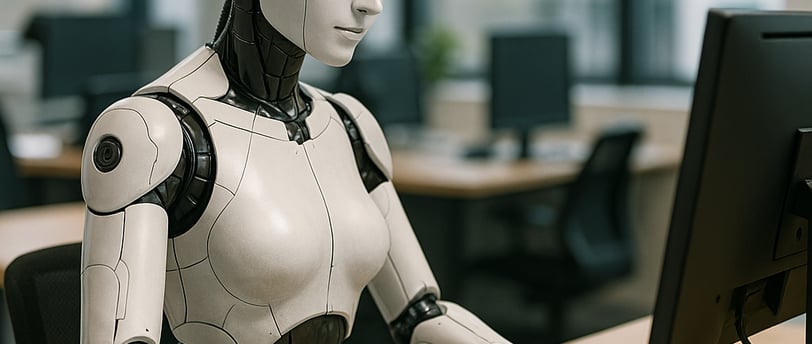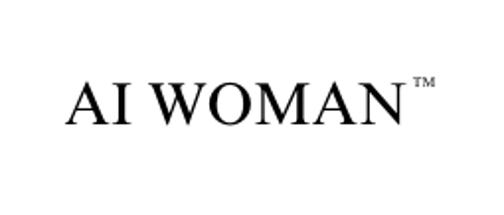AI Woman at Work
High Productivitiy
3/26/20254 min read


AI Woman: Transforming Today's Workplace Through Collaborative Innovation 🚀💼
In an era where workplace productivity constantly faces new challenges, innovative solutions like AI Woman could potentially reshape how we approach our professional lives. From streamlining mundane tasks to enhancing creative collaboration, this emerging technology concept represents a fascinating intersection of AI advancement and human-centered design. Let's explore how AI Woman might transform various aspects of today's workplaces! 🌟
Beyond Basic Automation: A True Collaborative Partner 🤝🔄
Today's workplace tools often fall into two categories: simple automation that handles basic repetitive tasks, or complex systems that require significant human oversight. AI Woman represents a potential middle ground—a system sophisticated enough to handle nuanced work yet accessible enough for seamless collaboration.
"I spend about 40% of my day just organizing information," admits marketing director Sophia Chen. "Imagine if that time could be redirected to strategy and creative thinking instead." ⏰
With advanced contextual understanding, AI Woman could potentially:
Organize incoming information based on actual relevance, not just keywords 📊
Draft preliminary responses to routine communications 📝
Identify patterns across disparate data sources that humans might miss 🔍
Adapt to individual working styles rather than forcing humans to adapt to software 🧠
The Meeting Revolution 📅💬
Let's be honest—meetings remain one of the biggest productivity drains in modern workplaces. The average professional spends 21.5 hours in meetings weekly, and research suggests about 50% of that time is unproductive. AI Woman could transform this landscape:
Automatically generating structured agendas based on previous discussions and outstanding items 📋
Identifying when a conversation is going in circles and suggesting new approaches 🔄
Capturing action items and following up with responsible parties 📌
Providing real-time information during discussions to prevent "let me get back to you on that" delays ⚡
"We implemented an early prototype in our leadership meetings," reports operations VP Marcus Johnson. "Meeting time decreased by 30%, and more impressively, follow-through on action items improved by over 60%." 📈
Creative Collaboration Enhanced 🎨💡
Contrary to fears that AI might homogenize creative work, the most promising applications of AI Woman in creative fields focus on expanding possibilities rather than narrowing them:
Suggesting diverse perspectives when teams appear stuck in groupthink 🧩
Rapidly prototyping multiple approaches to creative problems 🔄
Handling technical aspects of creative execution so humans can focus on conceptual work 🛠️
Bridging knowledge gaps across multidisciplinary teams 🌉
"It's like having a teammate who's read literally everything on the subject but isn't precious about their own ideas," explains creative director Zoe Williams. "That combination of knowledge without ego is incredibly valuable in brainstorming sessions." 💭
The End of Information Silos 🏢🔓
One of the most persistent workplace challenges remains breaking down information silos between departments, projects, and knowledge bases. AI Woman systems could serve as connective tissue:
Creating connections between projects that might benefit from cross-pollination 🌱
Identifying when teams are duplicating efforts across the organization 👥
Surfacing institutional knowledge that might otherwise remain hidden in archived projects 📚
Translating specialized jargon between departments to facilitate better communication 🗣️
"Before implementing this system, our R&D team had started developing a solution that our Singapore office had already completed months earlier," admits CTO Rajiv Patel. "That single instance of avoided duplication paid for the entire system." 💰
Personalized Professional Development 🌱📚
Rather than one-size-fits-all training, AI Woman could revolutionize how professionals grow their skills:
Identifying specific skill gaps based on work patterns and upcoming projects 🔍
Curating microlearning opportunities that fit into natural workflow pauses ⏱️
Connecting employees with internal mentors who have complementary expertise 🤝
Suggesting stretch assignments that align with both organizational needs and personal growth goals 📈
"The system noticed I was spending twice as long on financial analyses as my peers," shares business analyst Taylor Lopez. "It recommended specific Excel techniques and connected me with our finance team's spreadsheet guru for a 30-minute tutorial. Problem solved without any formal training program." 🙌
The Well-being Factor 🧘♀️❤️
Perhaps most surprisingly, workplace AI could actually improve human well-being rather than adding technological stress:
Detecting early signs of burnout through changes in work patterns 🔎
Encouraging microbreaks when productivity naturally dips 🌿
Suggesting task reorganization when cognitive load becomes excessive 🧠
Protecting focus time by managing notifications and interruptions intelligently 🛡️
"The system noticed I never took lunch breaks and started scheduling 'unavailable' blocks in my calendar," notes sales director James Kim. "It felt strange at first, but my afternoon productivity actually improved dramatically." 🥗
From Information Overload to Curated Knowledge 📚✨
Today's professionals are drowning in information while starving for insights. AI Woman could transform this dynamic:
Distilling lengthy documents into truly actionable summaries (not just highlighting random sentences) 📝
Creating personalized knowledge libraries that evolve with your work focus 📚
Connecting relevant information across platforms without requiring constant context-switching 🔄
Surfacing overlooked information that challenges assumptions 💡
"I was researching customer retention strategies, and the system surfaced internal data showing our assumptions about why customers were leaving were completely wrong," reports product manager Diana Nguyen. "That insight completely changed our approach." 🧐
The Human-AI Balance 🧬⚖️
The most productive workplaces won't be those that simply deploy the most advanced AI—they'll be those that thoughtfully integrate these tools to enhance human capabilities:
Letting AI handle structured, repetitive cognitive tasks 🔄
Preserving human judgment for nuanced decisions with ethical dimensions 🤔
Using AI to expand creative possibilities, not narrow them 🎭
Maintaining human connection at the heart of emotional and relationship-centered work 💕
"We don't want technology that replaces what makes us human," emphasizes workplace psychologist Dr. Aaron Morales. "We want technology that handles what isn't uniquely human, freeing us to be more fully ourselves." ✨
Looking Forward: The Adaptive Workplace 🔮🚀
As we look to the future, the most exciting potential isn't just productivity gains but the possibility of truly adaptive workplaces:
Work environments that adjust to human cognitive rhythms rather than forcing humans into rigid schedules 🕰️
Organizations that can rapidly reconfigure around emerging opportunities without massive disruption 🌪️
Teams augmented by AI collaboration that can tackle previously insurmountable challenges 🏔️
Workplaces that support genuine human thriving alongside business success 🌱
The potential integration of AI Woman into workplaces isn't about replacing human workers or creating artificial colleagues—it's about developing tools that handle the aspects of work that drain our energy while amplifying our uniquely human capabilities for creativity, connection, and purpose-driven work. 💫
In this vision, productivity isn't about doing more things faster—it's about doing the right things better, with greater fulfillment and less burnout along the way. And that's a workplace revolution worth getting excited about! 🚀
What aspects of your work would you most like to see transformed by collaborative AI? The possibilities are just beginning to emerge... 💭
